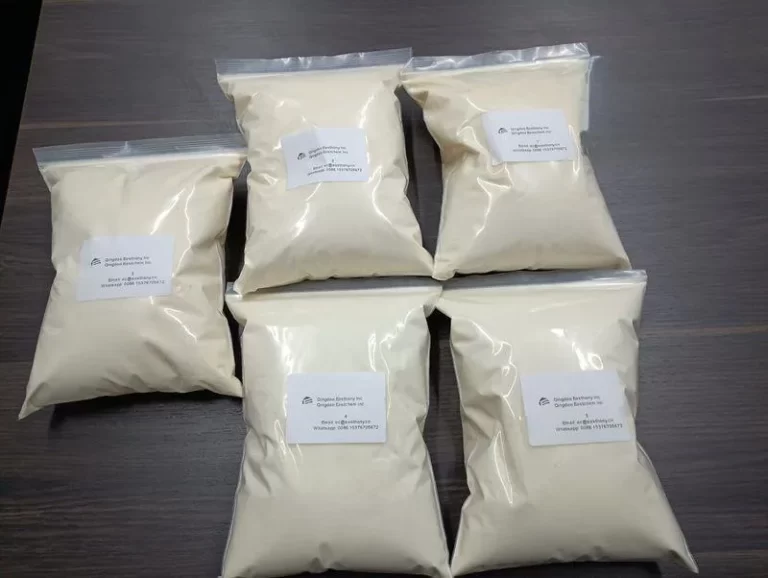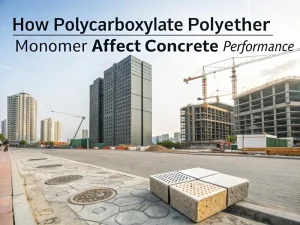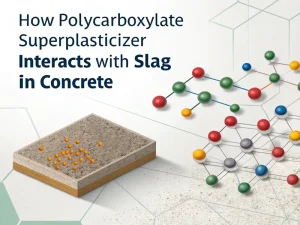Blog

Polycarboxylate superplasticizers have revolutionized the field of concrete technology due to their remarkable performance-enhancing properties.
These additives have become an essential component in modern concrete formulations, enabling the production of high-quality, durable, and workable concrete. In recent years, there have been significant advancements in the research and development of polycarboxylate superplasticizers, leading to improved performance and expanded applications.
This article will explore the latest advancements in polycarboxylate superplasticizers and their implications for the construction industry.
Researchers have focused on designing and synthesizing polycarboxylate superplasticizers with specific molecular architectures for optimal performance.
By precisely controlling the length and distribution of the polymer chains and the types and positions of functional groups, it is possible to enhance the interaction between the superplasticizer and cement particles.
This results in improved dispersion ability, better water reduction, and enhanced slump retention.
Modifications of the side chains of polycarboxylate polymers have also been a critical area of research. Longer and more flexible side chains can provide better steric hindrance, preventing the re-agglomeration of cement particles and maintaining the dispersion state for a longer time.
Additionally, introducing specific functional side chains can impart additional properties, such as improved compatibility with other admixtures or enhanced resistance to certain environmental factors.
Controlled radical polymerization methods, such as atom transfer radical polymerization (ATRP) and reversible addition-fragmentation chain transfer (RAFT) polymerization, have gained significant attention in synthesizing polycarboxylate superplasticizers.
These techniques allow for precise control over the polymers’ molecular weight, molecular weight distribution, and chain architecture. Compared to traditional polymerization methods, CRP techniques can produce superplasticizers with more uniform and well-defined structures, leading to improved performance consistency and predictability.
There is a growing trend towards developing green and sustainable synthesis methods for polycarboxylate superplasticizers. This includes using renewable raw materials, such as bio-based monomers, and implementing environmentally friendly reaction processes.
For example, some researchers are exploring using plant-derived materials to synthesize the superplasticizers’ polymer backbone or functional groups.
These efforts reduce the environmental impact of superplasticizer production and offer the potential for new and unique properties that can benefit concrete performance.
The latest advancements in polycarboxylate superplasticizers have led to significant improvements in concrete’s workability. They can provide higher water reduction rates while maintaining excellent slump retention and flowability.
This allows for more easily placeable and compact concrete production, reducing the need for excessive vibration during placement.
Additionally, the improved rheological properties of concrete with these superplasticizers can enhance its permeability and prevent segregation, ensuring a more homogeneous and high-quality concrete structure.
Polycarboxylate superplasticizers can also contribute to improved strength and durability of concrete.
Optimizing the water-cement ratio and improving the dispersion of cement particles can promote more efficient cement hydration and the formation of a denser and more homogeneous cement matrix. This results in higher compressive, tensile, and flexural strengths of the concrete.
Moreover, the enhanced durability of concrete is achieved through reduced porosity and improved resistance to various environmental factors such as chloride ion penetration, carbonation, and freeze-thaw cycles.
Despite the significant advancements, there are still challenges related to the compatibility and interaction of polycarboxylate superplasticizers with other concrete admixtures and materials.
For example, interactions with certain types of cement or mineral additives may affect the performance of the superplasticizer or lead to unexpected behavior in the concrete.
Future research should focus on better understanding these interactions and developing strategies to ensure optimal compatibility and performance in complex concrete mixtures.
As polycarboxylate superplasticizers become more complex, ensuring consistent quality and performance becomes more challenging.
More robust quality control measures and standardized testing methods are needed to evaluate the quality and performance of these superplasticizers.
This will help ensure that the construction industry can rely on these additives per these additives’ performance and consistently produce high-quality concrete sections.
Future research in polycarboxylate superplasticizers is likely to focus on further improving their performance, developing more sustainable and cost-effective production methods, and exploring new applications in emerging areas of construction.
This may include the development of superplasticizers with enhanced multifunctional properties, such as combined water reduction, strength enhancement, and durability improvement, as well as using nanotechnology and innovative materials concepts to create next-generation superplasticizers.
Additionally, research on the long-term performance and durability of concrete with these superplasticizers under different environmental and loading conditions will be crucial for ensuring the safety and reliability of concrete structures.
The latest advancements in polycarboxylate superplasticizers have significantly improved the performance and application of concrete.
These additives have produced higher quality, more durable, and workable concrete through molecular structure optimization, advanced synthesis methods, and performance enhancements. However, challenges still need to be addressed to fully realize the potential of these advancements.
With continued research and development, polycarboxylate superplasticizers are expected to play an even more critical role in the construction industry’s future, contributing to the construction of more sustainable and high-performance infrastructure.

How Polycarboxylate Polyether Monomer Affect Concrete Performance
Blog How Polycarboxylate

How Polycarboxylate Superplasticizer Interacts With Slag In Concrete
Blog How Polycarboxylate